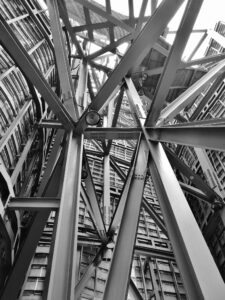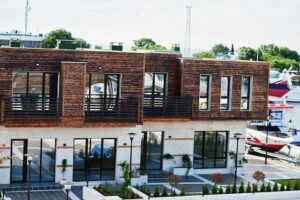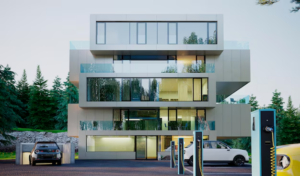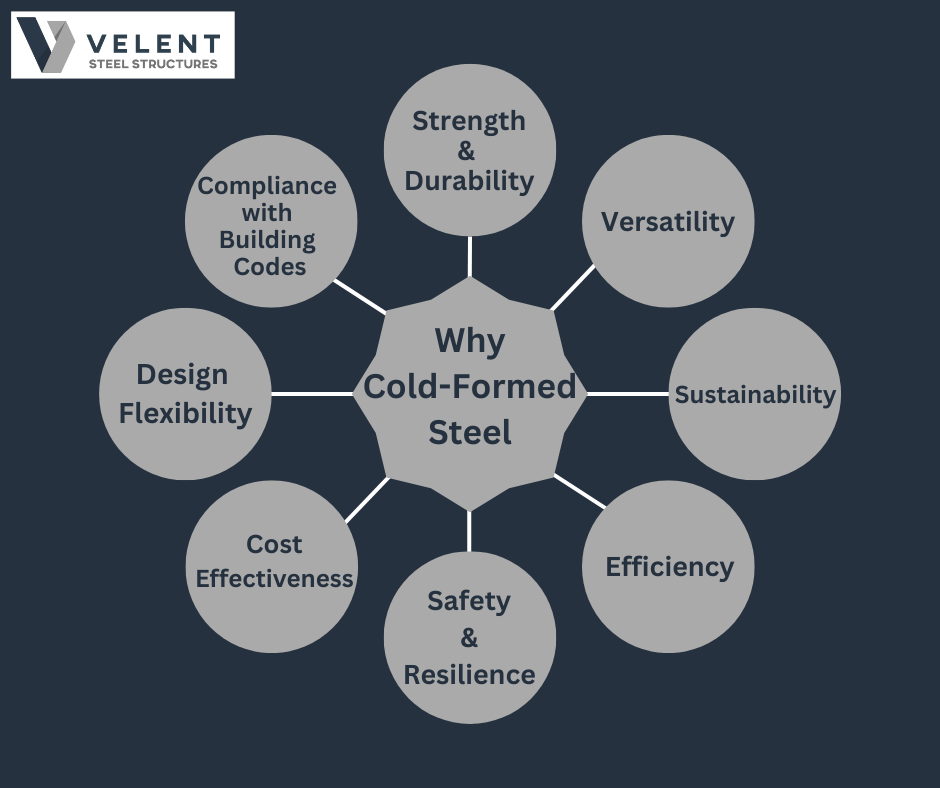With the buzzwords of efficiency, sustainability, and resilience driving innovation in construction, steel is emerging as the material of choice for multi-family housing projects. Its ability to deliver on stringent demands while working to meet modern challenges gives it a standout position as a builder’s choice and a developer’s dream. In this blog, let’s look into why steel, particularly cold-formed steel, is revolutionizing the landscape of multi-family construction.
Why Steel for Multi-Family Housing?
Multi-family buildings are more than just structures; they are homes, investments, and long-term assets. It is for this reason that the choice of material will influence not only the building process but also the building lifecycle. Steel boasts several benefits that make it ideal for such projects.

1. Strength Meets Lightweight Versatility
Steel, especially CFS, combines high tensile strength with a lightweight profile. For multi-family projects, this translates into:
- Efficient Frameworks: Steel’s strength allows for larger spans and open floor plans without compromising structural integrity.
- Simplified Logistics: Its lightweight nature reduces transportation costs and simplifies handling on-site, leading to faster assembly.
2. A Win for Speed and Efficiency
In construction, time is money and more so with multi-family projects that can have a rippling effect on cost and return. Steel can bring the project much sooner through:
- Prefabrication Advantage: Steel components are made off-site, ensuring accuracy and less time spent on-site.
- Quick Assembly: With pre-engineered panels and frames, assembly is quite quick, thus saving labor costs and time.
- Weather-Resilient Construction: Steel can stand up to most weather conditions without loss of downtime.
3. Sustainability at Its Core
Sustainability is not a buzzword; it is a must. The greener attributes of steel are increasingly making it more attractive for multi-family applications that look forward to meeting green-building standards.
- Recyclable Material: Steel can be recycled indefinitely without losing its properties, thus contributing to a circular economy.
- Reduced Waste: Precision in fabrication minimizes material waste, enhancing overall resource efficiency.
- Energy Efficiency: Steel adaptability allows for the direct integration of energy-efficient functions such as advanced insulation together with renewable energy systems.
4. Durability: Built to Last
The longevity of multi-family structures is a critical concern for developers and investors. Steel’s durability means buildings remain strong and safe for decades.
- Pest Resistance: As compared to wood, steel is termite-proof and pest-resistant, saving the maintenance cost.
- Mold and Moisture Resistance: Steel does not warp, swell, or rot so is ideal for buildings located in areas with humid climatic conditions.
- Fire Safety: Noncombustible by nature, steel provides excellent fire protection, which is one of the major factors in multi-family housing safety standards.
5. Flexibility for Diverse Designs
Most multi-family projects are a mix of standardization for efficiency but customized to fit the diverse needs of the residents. Steel contributes to this in:
- Design Adaptability: Ranging from high-rise apartments to sprawling townhouses, steel can accommodate varied designs.
- Future-Proofing: Steel buildings are easier to modify and expand, so developers may adapt to changing demands better.
6. Cost-Effectiveness Over Time
While the initial costs of steel might seem higher than traditional materials, its long-term value far outweighs the upfront expense.
- Lower Maintenance Costs: Steel’s durability and resistance to wear significantly reduce upkeep expenses.
- Insurance Savings: Many insurers offer reduced premiums for steel structures due to their resilience against fire, pests, and natural disasters.
- Energy Savings: Steel frames support energy-efficient designs that lower utility bills for residents.
Overcoming Common Misconceptions
Many popular myths exist regarding steel when applied to multi-family construction. Such myths have to be broken down for us to have a better understanding of its potential capabilities:
- Thermal Performance:
One of the common myths circulating is that steel structures have poor insulation capabilities, causing higher energy costs. Through advanced insulation techniques such as continuous insulation and thermal breaks, it can be understood that steel buildings can keep up with or even pass the efficiency in terms of energy. Steel’s versatility can combine high-performance insulation systems together without causing thermal bridging and minimize heat loss and gain. - Acoustic Properties:
It is believed that steel-framed buildings allow more sound penetration than traditional materials such as wood. In fact, the modern solutions to noise transfer are resilient channels, acoustic mats, and double-layered drywall, which efficiently counteract noise transfer. This ensures that steel-framed multi-family housing delivers quiet, private living spaces that occupants expect. - Corrosion Concerns:
Some developers fear that steel structures rust and corrode easily, especially when wet or close to the coast. However, galvanization, protective coatings, and proper maintenance procedures help counteract these fears. CFS is usually treated to resist corrosion, and therefore even in harsh weather conditions, it can last longer. - Design Limitations:
Most would assume that a steel structure restricts its design into box-like or industrial building forms when the material could be used on any form of architectural design, even modern apartment buildings and intricate, custom facades, among others. Strength allows expansive glass windows and open-concept interiors as well as layouts that could not so easily be realized in other materials. - Environmental Impact:
While most people may believe that steel production is energy-intensive and terrible for the environment, that’s far from reality. It is one of the most recycled materials globally; it has some of the highest reuse rates, supporting a circular economy. Not to mention, the carbon footprint of steel has diminished through improved processes in manufacturing. - Fire Performance:
Although steel is incombustible, many people believe that high heat can weaken it during fires. In reality, fireproof coatings, encasements, and sprinkler systems protect steel structures, making them meet the most stringent fire safety standards. The inherent fire resistance of steel remains a significant advantage over combustible materials such as wood.
By eliminating the above myths, developers and builders will be able to fully utilize the excellent strength, efficiency, and sustainability of steel for their multi-family housing projects.
Real-World Applications
The versatility of steel is evident in its successful use in many multi-family projects:
- High-Density Urban Housing:

Steel allows for taller buildings and open floor plans in a space-constrained city. It offers strength that allows expansive layouts and maximizes living space. - Affordable Housing:
Prefabricated steel saves on costs and accelerates construction, making it an ideal choice for budget-conscious projects. Lower maintenance and longevity add value in the long term. - Luxury Apartments:

Steel’s sleek, modern appearance allows for expansive windows and bold designs to enhance the aesthetic of high-end projects. It also supports unique architectural features and high-end finishes. - Mixed-Use Developments:
Steel easily integrates residential, retail, and office spaces, that enable dynamic urban communities. Its flexibility allows developers to adapt spaces as needed. - Student Housing:
Prefabricated steel can offer quick, expandable, and affordable housing for growing populations of students. It can be expanded or reconfigured; thus it is well-suited for fluctuating demand. - Disaster-Resilient Housing:
The durability of steel ensures the long-term safety of homes against earthquakes, storms, and fire. Since it is noncombustible, fire risk is also reduced with overall resilience. - Suburban Townhouses:
Steel facilitates versatile designs for suburban communities. The company creates strong, aesthetically pleasing homes for families in this respect. This capability to quickly expand construction matches the need for housing.
Steel continues to drive innovation across all segments of multifamily housing, offering efficiency, durability, and design flexibility.
The Future is Steel
As multi-family construction continues to evolve, steel stands out as a material that meets the demands of modern builders, residents, and regulators alike. Its blend of strength, sustainability, and flexibility ensures that it remains at the forefront of construction innovation. By leveraging steel, developers can create homes that are functional and beautiful and built to last.
If you’re planning your next multi-family project, consider the transformative potential of steel. It’s more than a material—it’s a foundation for future success.
Steel is redefining the future of multi-family housing with unmatched strength, sustainability, and design flexibility. Explore how Velent can bring your next project to life with innovative steel solutions – Contact Us Today.


